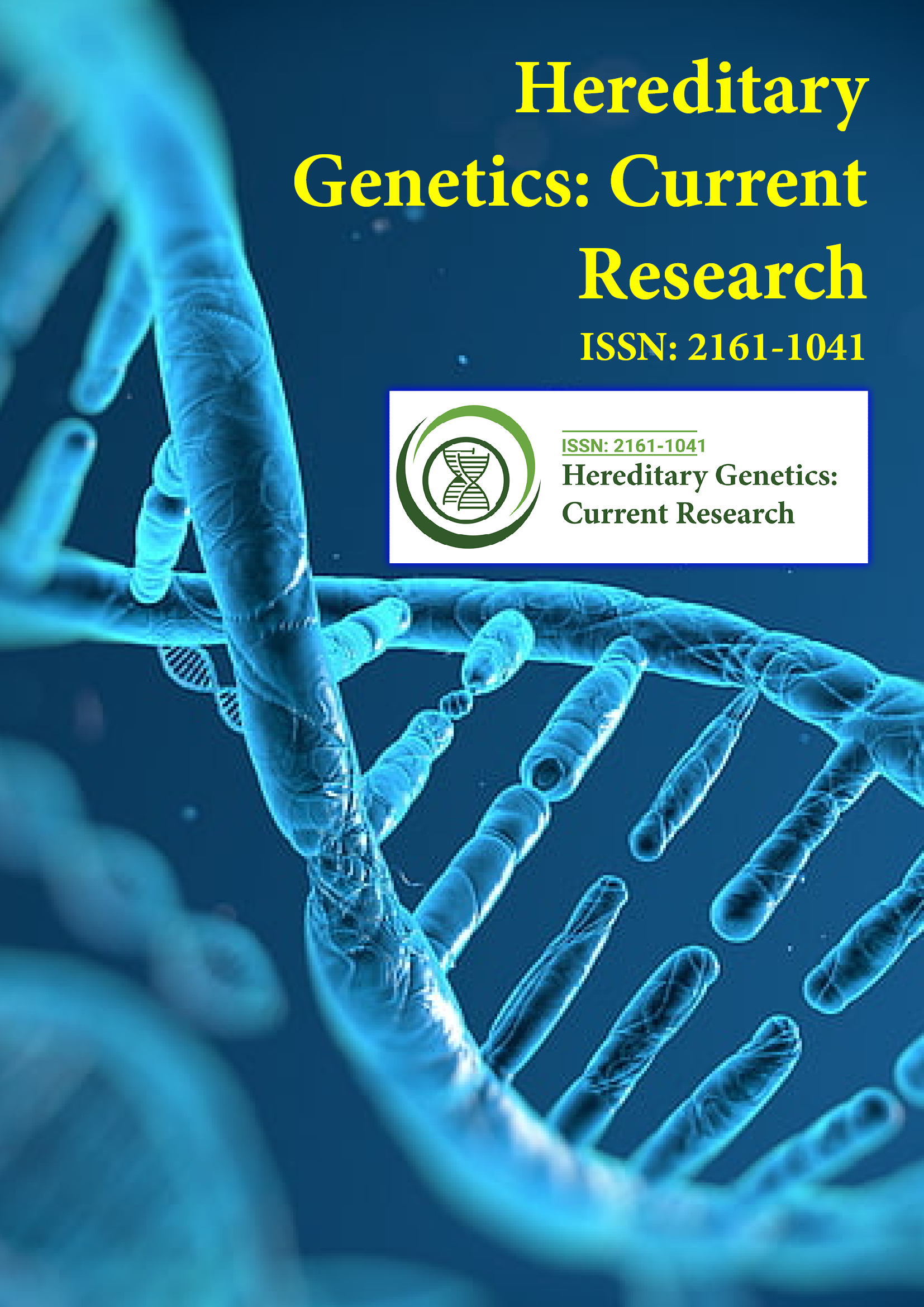Indexed In
- Open J Gate
- Genamics JournalSeek
- CiteFactor
- RefSeek
- Hamdard University
- EBSCO A-Z
- NSD - Norwegian Centre for Research Data
- OCLC- WorldCat
- Publons
- Geneva Foundation for Medical Education and Research
- Euro Pub
- Google Scholar
Useful Links
Share This Page
Journal Flyer

Open Access Journals
- Agri and Aquaculture
- Biochemistry
- Bioinformatics & Systems Biology
- Business & Management
- Chemistry
- Clinical Sciences
- Engineering
- Food & Nutrition
- General Science
- Genetics & Molecular Biology
- Immunology & Microbiology
- Medical Sciences
- Neuroscience & Psychology
- Nursing & Health Care
- Pharmaceutical Sciences
Opinion Article - (2022) Volume 11, Issue 2
Hereditary Skin Diseases and its Different Types of Challenges
Suhail Goldstein*Received: 01-Mar-2022, Manuscript No. HGCR-22-16431; Editor assigned: 04-Mar-2022, Pre QC No. HGCR-22-16431(PQ); Reviewed: 18-Mar-2022, QC No. HGCR-22-16431; Revised: 25-Mar-2022, Manuscript No. HGCR-22-16431 (R); Published: 04-Apr-2022, DOI: 10.35248/2161-1041.22.11.207
Description
Skin condition effects integumentary system, organ system that is surrounded body, and includes the skin, nails, and related muscles and glands. The main function of this system is to be a barrier to the external environment. The condition of the human skin system represents a wide range of diseases, also known as skin diseases, and in certain situations many nonpathological conditions such as melanonychia and club nails. Some skin conditions describe most doctors' visits, but thousands of skin conditions are described. Because the underlying cause and etiology are often unknown, the classification of these conditions often presents many disease classification challenges.
Therefore, most of the books are categorized based on location, such as mucosal texture, morphology, chronic blisters, and skin diseases caused by physical factors. Clinically, the diagnosis of a particular skin condition begins with collecting relevant information about the existing skin lesions. Symptoms like itching, pain, acute or chronic duration, placement single, generalized, circular, linear, morphological spots, papules, vesicles, and the color red. A skin biopsy may also be required for some diagnoses it provides histological information that can be correlated with clinical features and laboratory data. The introduction of skin ultrasound has made it possible to detect skin tumors, inflammatory processes, and skin diseases.
The skin weighs an average of 4 kg and is composed of three different layers: the epidermis, the dermis, and the hypodermis. The two main types of human skin are hairless and hairy skin on the palms and soles of the feet, also known as the "palm pad" surface. In the latter type, the hair has hair follicles, sebaceous glands, and associated arrector pili muscles of structures called sebaceous units. In the embryo, the epidermis, hair, and glands are derived from the ectoderm. The ectoderm is chemically influenced by the underlying mesoderm that forms the dermis and subcutaneous tissue. The epidermis is the most superficial layer of skin, a flat epithelium with several layers such as the stratum corneum, stratum lucidum, stratum granulosum, stratum spinosum, and stratum basale. Since the epidermis is not supplied with blood directly, these layers are nourished by diffusion from the dermis.
The epidermis contains four types of cells: keratinocytes, melanocytes, Langerhans cells, and Merkel cells. Of these, the main component is keratinocytes, which make up about 95% of the epidermis. This stratified squamous epithelium is maintained by cell division within the basal layer, where differentiating cells slowly move outward through the stratum spinosum to the stratum corneum, where cells continue to shed from the surface. In normal skin, the rate of formation is equal to the rate of loss. It takes about two weeks for cells to move from the basal cell layer to the top of the stratum granulosum, and another two weeks to cross the stratum corneum. The epidermis is the layer of pores and skin among the dermis and subcutaneous tissue and contains sections, the papillary epidermis, and the reticular epidermis. The superficial papillary epidermis interdigitates with the overlying rete ridges of the dermis, among which the 2 layers engage via the basement membrane zone structural additives of the epidermis, are collagen, elastic fibres, and floor substance additionally referred to as the more fibrillar matrix. Within those additives are the pilosebaceous units, arrestor pili muscles, and the eccrine and apocrine glands. The epidermis incorporates vascular networks that run parallel to the pores and skin surface—one superficial and one deep plexus which might be linked via way of means of vertical vessels. The feature of blood vessels inside the epidermis is fourfold: to deliver nutrition, adjust the temperature, modulate inflammation, and take part in wound healing.
The subcutaneous tissue is a layer of fats among the epidermis and underlying fascia. This tissue can be similarly divided into additives, the real fatty layer, or panniculus adiposis, and a deeper vestigial layer of muscle, the panniculus carnosus. The foremost aspect of this tissue is the adipocyte, or fats cell. The shape of this tissue consists of septal i.e. linear strands and lobular compartments, which range in microscopic appearance. Functionally, the subcutaneous fats insulate the body, absorb trauma, and serve as a reserve strength source.
Citation: Goldstein S (2022) Hereditary Skin Diseases and its Different Types of Challenges. Hereditary Genet. 11:207.
Copyright: © 2022 Goldstein S. This is an open access article distributed under the terms of the Creative Commons Attribution License, which permits unrestricted use, distribution, and reproduction in any medium, provided the original author and source are credited.

